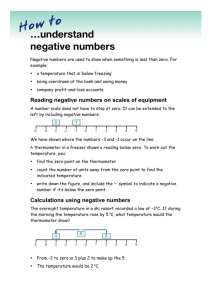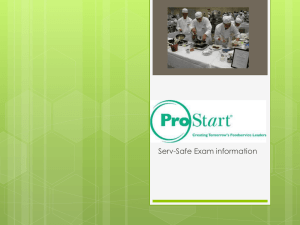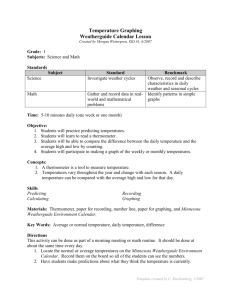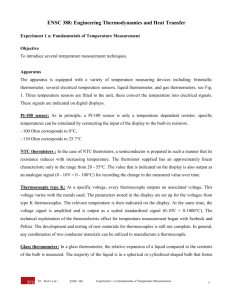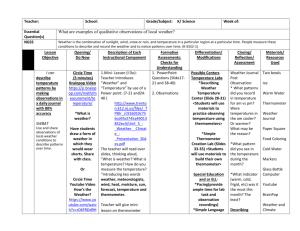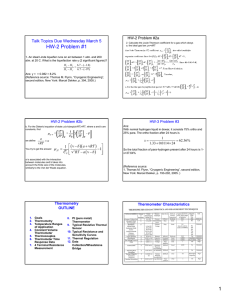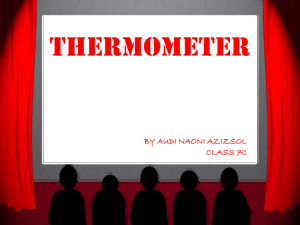TMT - Edibon
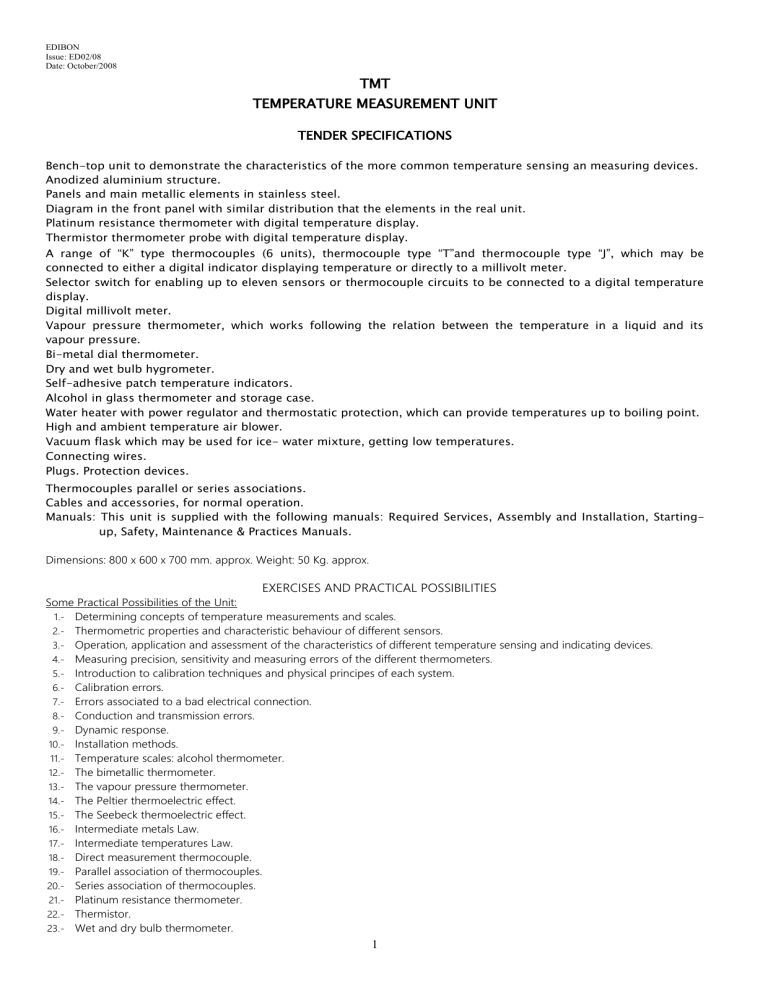
EDIBON
Issue: ED02/08
Date: October/2008
TMT
TEMPERATURE MEASUREMENT UNIT
TENDER SPECIFICATIONS
Bench-top unit to demonstrate the characteristics of the more common temperature sensing an measuring devices.
Anodized aluminium structure.
Panels and main metallic elements in stainless steel.
Diagram in the front panel with similar distribution that the elements in the real unit.
Platinum resistance thermometer with digital temperature display.
Thermistor thermometer probe with digital temperature display.
A range of “K” type thermocouples (6 units), thermocouple type “T”and thermocouple type “J”, which may be connected to either a digital indicator displaying temperature or directly to a millivolt meter.
Selector switch for enabling up to eleven sensors or thermocouple circuits to be connected to a digital temperature display.
Digital millivolt meter.
Vapour pressure thermometer, which works following the relation between the temperature in a liquid and its vapour pressure.
Bi-metal dial thermometer.
Dry and wet bulb hygrometer.
Self-adhesive patch temperature indicators.
Alcohol in glass thermometer and storage case.
Water heater with power regulator and thermostatic protection, which can provide temperatures up to boiling point.
High and ambient temperature air blower.
Vacuum flask which may be used for ice- water mixture, getting low temperatures.
Connecting wires.
Plugs. Protection devices.
Thermocouples parallel or series associations.
Cables and accessories, for normal operation.
Manuals: This unit is supplied with the following manuals: Required Services, Assembly and Installation, Startingup, Safety, Maintenance & Practices Manuals.
Dimensions: 800 x 600 x 700 mm. approx. Weight: 50 Kg. approx.
EXERCISES AND PRACTICAL POSSIBILITIES
Some Practical Possibilities of the Unit:
1.Determining concepts of temperature measurements and scales.
2.-
3.-
4.-
5.-
6.-
7.-
8.-
9.-
10.-
11.-
12.-
13.-
14.-
15.-
16.-
17.-
18.-
19.-
20.-
21.-
22.-
23.-
Thermometric properties and characteristic behaviour of different sensors.
Operation, application and assessment of the characteristics of different temperature sensing and indicating devices.
Measuring precision, sensitivity and measuring errors of the different thermometers.
Introduction to calibration techniques and physical principes of each system.
Calibration errors.
Errors associated to a bad electrical connection.
Conduction and transmission errors.
Dynamic response.
Installation methods.
Temperature scales: alcohol thermometer.
The bimetallic thermometer.
The vapour pressure thermometer.
The Peltier thermoelectric effect.
The Seebeck thermoelectric effect.
Intermediate metals Law.
Intermediate temperatures Law.
Direct measurement thermocouple.
Parallel association of thermocouples.
Series association of thermocouples.
Platinum resistance thermometer.
Thermistor.
Wet and dry bulb thermometer.
1



